#ta netjer
Explore tagged Tumblr posts
Text

#african#afrakan#kemetic dreams#africans#brownskin#brown skin#afrakans#african culture#afrakan spirituality#epic video#North African#Ethiopian#eritrea#east africa#ta netjer
272 notes
·
View notes
Text

THE GLOBAL AFRICAN AWAKENING ASE'
RELATIONSHIP BETWEEN THE ANCIENT KEMITES OR REMETCH (EGYPTIANS) & KUSHITES (NEHESY)
The Nehesy are Kushites, southern neighbors to Kemet. Punt is also referred to as the “land of the horizon-dwellers". Another name for Punt was, "Ta-Netjer" which translates to "Land of the gods". Many scholars suggest Punt Land (Modern day Horn of Africa region) is the origin of the Kemetic people. “Between the twin mountains of the Moon.”
"Herodotus also remarked on the shared cultural practices between Egyptians and Ethiopians as he states: “I myself guessed it to be so, partly because they are dark-skinned and woolly-haired..” - Herodotus
GENETIC SIMILARITIES BETWEEN KEMITES & KUSHITES:
"The process of the peopling of the Nile Valley likely shaped the population structure and early biological similarity of Kemites and Kushites…"
In 2005, Dr. Keita proffered a novel method to view Nubian-Egyptian relationships; he suggested that military interactions could not alone account for the biological similarities among the two populations. Rather, Keita (2005) saw the relationship as a continuum, dating back to the late Pleistocene and mid-Holocene, placing importance on the peopling of the Nile Valley as the initial cause for genetic similarity…
"The long history of contact between Egypt and Nubia is documented in the archaeological record…The extensive contact has led to detectable genetic and therefore skeletal and dental similarities among the two populations."
"King of Upper Kemet…Beautiful is the Ka-Soul of Ra who appears in Waset".
Truth Restored!
#blackhistory365 #blackexcellence #knowthyself #kemet #AncientEgypt #kush
75 notes
·
View notes
Text
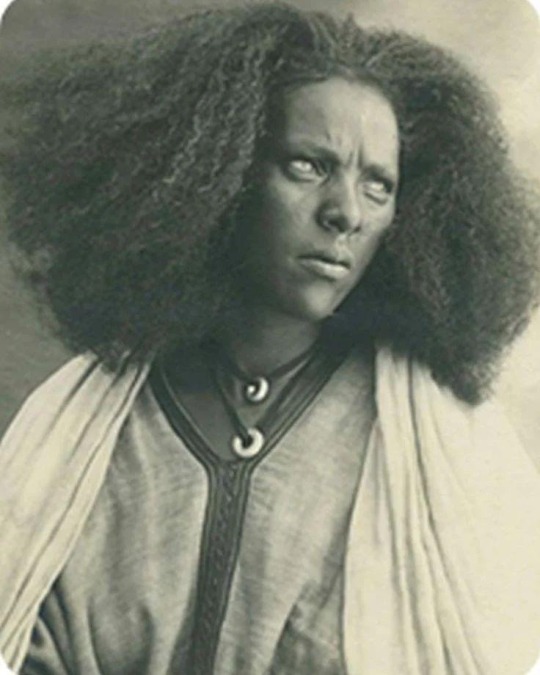



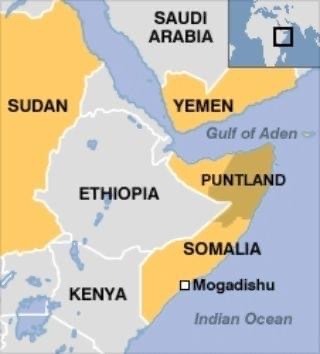
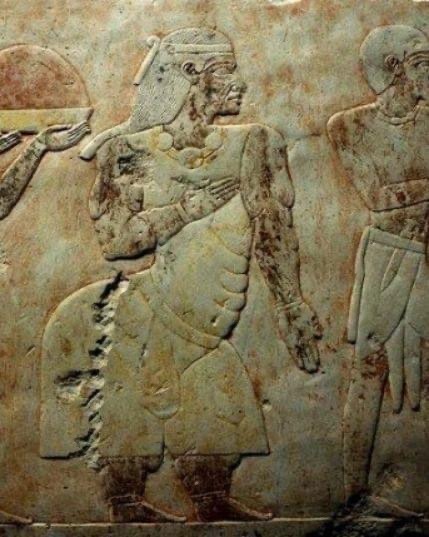
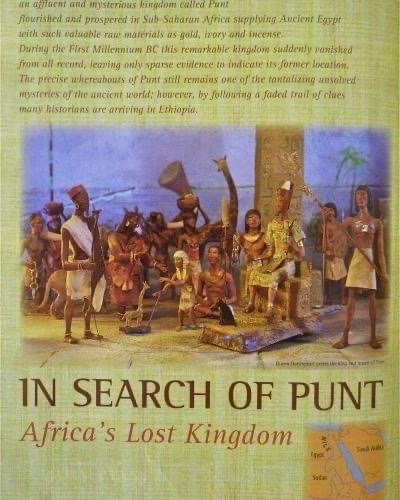
The Land of Punt(Ta netjer, the “land of the gods”)
After the end of the New Kingdom period, Punt became “an unreal and fabulous land of myths and legends.”
At times, the ancient Egyptians called Punt Ta netjer, meaning “God’s Land”.This referred to the fact that it was among the regions of the Sun God, that is, the regions located in the direction of the sunrise, to the East of Egypt. These eastern regions’ resources included products used in temples, notably incense. Older literature (and current non-mainstream literature) maintained that the label “God’s Land”, when interpreted as “Holy Land” or “Land of the gods/ancestors”, meant that the ancient Egyptians viewed the Land of Punt as their ancestral homeland. W. M. Flinders Petrie believed that the Dynastic Race came from or through Punt and E. A. Wallis Budge stated that “Egyptian tradition of the Dynastic Period held that the aboriginal home of the Egyptians was Punt…”.The term was not only applied to Punt, located southeast of Egypt, but also to regions of Asia east and northeast of Egypt, such as Lebanon, which was the source of wood for temples.
Location
The oldest known expedition to Punt was organized by Pharaoh Sahure of the 5th dynasty (2458-2446 BC). Also around 1950 BC, in the time of King Mentuhotep III, 11th dynasty (2004-1992 BC), an officer named Hennu and three thousand men from the south transported material for building ships through Wadi Hammamat, and to Punt acquiring a number of exotic products including incense, perfume and gum was brought to Egypt. A very famous expedition was for Queen Hatshepsut in the 18th dynasty (1473-1458 BC). It was formed of five ships, each measuring 70 feet long, and with several sails. These accommodated 210 men, including sailors and 30 rowers, and was led by the Nubian general “Nehsi”. They departed at Quseir on the Red Sea for what was primarily a trading mission, seeking frankincense and myrrh, and fragrant unguents used for cosmetics and in religious ceremonies. However, they also brought back exotic animals and plants, ivory, silver and gold. A report of this voyage is left behind as temple reliefs in Deir el-Bahri, Egypt (see reliefs below). The reliefs shows the departure of the expedition, its arrival at the mysterious land, the landing of the ships with the gifts by the Puntine leader to Hatshepsut, and the preparations for the return voyage. The temple reliefs also showed the features of the Puntine people, who were black Africans, as well as another race much resembling Egyptians. Donkeys were depicted as the method of transporting goods, and white dogs guarding the people’s houses. Birds, monkeys, leopards and hippopotamus are also seen, as well as giraffes which are typical African animals, to live in Punt. The Nubian Nehsi is then shown in front of his tent with a banquet offered to his guests, and observing the gifts presented.
And then there is the story of The Shipwrecked Sailor, 2200 BC which references Punt.
Petrie, W.M. Flinders. The Making of Egypt, London. New York, Sheldon Press; Macmillan, 1939:
Page 77
“Some of the most obvious public works of the 1st dynasty were the carrying on of earlier undertakings. The great historical maces, and the irrigation works, had been developed under the Scorpion king of the Aunu, and both may have originated much earlier. Many vases and bowls bear his name.”
“Origins in Elam and Punt. The distinctive character of the 1st dynasty, which separates it from all that went before, is the conquest and union of the whole land of Egypt. It became thus subject to the falcon-bearing tribe of Horus, which was the natural enemy of the Aunu, the Set-bearing tribe. This falcon tribe had certainly originated in Elam, as indicated by the hero and lions on the "Araq knife handle”. They went down the Persian Gulf and settled in the “horn of Africa.” There they named the “Land of Punt,” sacred to later Egyptians as the source of the race. The Pun people founded the island fortress of Ha-fun, which commands the whole of that coast, and hence came the Punic or Phoenic peoples of classical history. Those who went up the Red Sea formed the dynastic invaders of Egypt, entering by the Qocier-Koptos road. Others went on to Syria and founded Tyre, Sidon and Aradus, named after their home islands in the Persian Gulf (Strabo, XVI, iii, 4). This migration formed the basis of the great spread of Puni, by the colonies of Carthage around the Mediterranean, and into the Atlantic on both north and south.“–W.M. Flinders Petrie
The Oxford History of Ancient Egypt, Ian Shaw, p. 317, 2003:
"There is still some debate regarding the precise location of Punt, which was once identified with the region of modern Somalia. A strong argument has now been made for its location in either southern Sudan or the Eritrean region of Ethiopia, where the indigenous plants and animals equate most closely with those depicted in the Egyptian reliefs and paintings.
It used to be assumed (primarily on the basis of the scenes at Deir el-Bahri depicting Hatshepsut’s expedition to Punt in the mid-18th Dynasty) that the trading parties travelled by sea from the ports of Quseir or Mersa Gawasis, but it now seems likely that at least some of the Egyptian traders sailed south along the Nile and then took an overland route to Punt, perhaps making contact with the Puntites in the vicinity of Kurgus, at the fifth cataract.
The Deir el-Bahri scenes include depictions of the unusual Puntite settlements, comprising conical reed-built huts set on poles above the ground, and entered via ladders. Among the surrounding vegetation are palms and myrrh trees, some of the latter already in the process of being hacked apart in order to extract the myrrh. The scenes also show myrrh trees being loaded onto the ships so that the Egyptians could produce their own aromatics from them (and it has been argued that this in itself may be an argument for the combined Nile-overland route from Punt to Egypt, given the fact that such plants might well have died during the more difficult voyage northwards along the Red Sea coast). These myrrh trees might even have been replanted in the temple at Deir el-Bahri itself, judging from the surviving traces of tree pits there.”
The oldest known expedition to Punt was organized by Pharaoh Sahure of the 5th dynasty (2458-2446 BC). Also around 1950 BC, in the time of King Mentuhotep III, 11th dynasty (2004-1992 BC), an officer named Hennu and three thousand men from the south transported material for building ships through Wadi Hammamat, and to Punt acquiring a number of exotic products including incense, perfume and gum was brought to Egypt. A very famous expedition was for Queen Hatshepsut in the 18th dynasty (1473-1458 BC). It was formed of five ships, each measuring 70 feet long, and with several sails. These accommodated 210 men, including sailors and 30 rowers, and was led by the Nubian general “Nehsi”. They departed at Quseir on the Red Sea for what was primarily a trading mission, seeking frankincense and myrrh, and fragrant unguents used for cosmetics and in religious ceremonies. However, they also brought back exotic animals and plants, ivory, silver and gold. A report of this voyage is left behind as temple reliefs in Deir el-Bahri, Egypt (see reliefs below). The reliefs shows the departure of the expedition, its arrival at the mysterious land, the landing of the ships with the gifts by the Puntine leader to Hatshepsut, and the preparations for the return voyage. The temple reliefs also showed the features of the Puntine people, who were black Africans, as well as another race much resembling Egyptians. Donkeys were depicted as the method of transporting goods, and white dogs guarding the people’s houses. Birds, monkeys, leopards and hippopotamus are also seen, as well as giraffes which are typical African animals, to live in Punt. The Nubian Nehsi is then shown in front of his tent with a banquet offered to his guests, and observing the gifts presented.
And then there is the story of The Shipwrecked Sailor, 2200 BC which references Punt.
[right] chief of Punt “Parakhu”; [left] his wife queen “Aty”
Original copy at the Museum at Cairo (No. 34419)
There is still some debate regarding the precise location of the mythical land of Punt:
Breasted, James Henry, Ph.D., Ancient Records of Egypt, Historical Documents, Vol. II, 1906:
Pages 102-104
“These are undoubtedly the most interesting series of relief’s in Egypt, and form almost our only early source of information for the land of Punt. They are as beautiful in execution as they are important in content. They record an important expedition of the queen thither, which was successfully concluded just before her ninth year.”
“The only earlier evidences of intercourse with Punt are as follows: In the Fourth Dynasty a Puntite negro appears as the slave of one of the sons of King Khufu, in the Fifth, King Sahure sent an expedition thither, and King Isesi sent another, which brought back a dancing dwarf; in the Sixth, an officer of Pepi II, named Enenkhet, was killed by the Sand-dwellers on the coast, while building a ship for the Punt voyage, and another expedition thither under the the same king was led by assistant treasurer, Thethy; in the Eleventh Dynasty, Henu, chief treasurer of King Senekhkere-Mentuhoptep III, dispatched an expedition to Punt, which he accompanied only to the coast of the Red Sea; in the Twelfth Dynasty, an officer of Amenemhet II, named Khentkhetwer, records his safe return from Punt; and finally there was also an expedition under Sesostris II.”
“The question of the location of Punt is too large for discussion here, but is was certainly in Africa, and probably was the Somali coast.”
“Historically, it is important to note that Thutmose III appears only once in the Punt reliefs, and that in a subordinate position, so that, as far as this source is concerned, the queen is the author of the expedition, which she undertakes in accordance with an oracle of Amon”.
Page 117
Punt under the Queen
“But I will cause thy army to tread them, I have led them on water and on land, to explore the waters of inaccessible channels, and I have reached the Myrrh-terraces. It is a glorious region of God’s-Land; it is indeed my place of delight. I have made it for myself, in order to divert my heart, together with Mut, Hathor, Wereret (Isis), mistress of Punt, the mistress, ‘Great in Sorcery’, mistress of all gods. They took myrrh as they wished, they loaded the vessels to their hearts’ content, with fresh myrrh trees, every good gift of this country, Puntites whom the people know not, Southerns of God’s-Land. I conciliated them by love that they might give to thee praise, because thou art a god, because of thy fame in the countries. I know them, I am their wise lord, I am the begetter, Amon-Re; my daughter, who binds the lords, is the king [Makere] (Hatshepsut). I have begotten her for myself. I am thy father, who sets thy fear among the Nine Bows, while they come in peace to all gods. They have brought all the marvels, every beautiful thing of God’s-Land, for which thy majesty sent them: heaps of gum of myrrh, and enduring trees bearing fresh myrrh, united in the festival-hall, to be seen of the lord of the gods. May thy majesty cause them to grow. My temple, in order to delight my heart among them. My name is before the gods, thy name is before all the living, forever. Heaven and earth are flooded with incense; odors are in the Great House. Mayest thou offer them to me, pure and cleansed, in order to express the ointment for the divine limbs, to offer myrrh, to make ointment, to make festive my statue with necklaces, while I am making libations for thee. My heart is glad because of seeing thee.”–James Henry Breasted
The loading of the ships.
Plate from The Road to Punt, F.D.P. Wicker, The Journal of African History, Vol. 12, No. 1 (1971), 162.
18 notes
·
View notes
Video
youtube
Eclipse of the Soul: Ancient Egyptian Spirit Summoning Ritual
Dua Netjer en Anpu, Dua Netjer en Djehuty, sa-ta nebu, ar-a-a ma’a heru. Pet ah en Ra, pet ah en maat, peret em heru. Ka (EVA), ir hat-a. Sa netjer en ma’a heru, (EVA), shetau nebu, seneb hetep. Hetep di nesu en ka-k. Ma-a heru, ir peret em heru. Hetep di neferu, nebu netjeru, ankh udja seneb. Seneb hetep, ir pet sekhem, ir ta sekhem.
0 notes
Text
Punt: The Fabled Land of Riches and Divine Connection for Ancient Egypt
Introduction The Land of Punt, often referred to in ancient Egyptian texts as “Ta Netjer,” meaning “Land of the Gods,” occupies a place of mystique and curiosity in ancient history. Known primarily through the records of the ancient Egyptians, Punt was a land of abundance and exotic riches that captured the imagination of one of history’s most enduring civilizations. The fascination with Punt…
0 notes
Text
Rather use the mobile app?
Open
afcnamrcn23
Aug 9, 2023
In the links below are references and more. You can save and review a little at a time. Very interesting rarities are shown with credible source that are not in video. Finish reading captions on Tumblr if on Pinterest by tapping VISIT or picture's title. If you came here from YouTube, it's best to copy and paste this link to watch in Chrome. This is so you can click right back to the main post where you left off after watching any of the quick videos
Ancient Egyptian Art They Don't Show
(more complete version old notepin link.(Finish reading captions on tmblr if on pntrst by tapping VISIT or picture's title) parts 1 - 10.
Sub Saharan and some African American history parts 6 -10).
You may have to log in to tumblr to view all pictures and links (quick and easy sign up). Same with Pinterest https://www.tumblr.com/afcnamrcn23/714127248426483712/190-wall-paintings-ideas-ancient-egyptian-art?source=share .
OR
This one connects directly to Tumblr if the link above has trouble (some Notepin links may not connect. The site is legitimate, but it's an older version from when the post was first made years ago)
compilation of Egyptian Nubians not included in previous links https://www.tumblr.com/shwat2013/659790664940257280/nubian-egyptian-people?source=share
There's a lot here, but near the bottom of this page is a must see video. "Oldest footage of Giza area 1897 (professionally colorized). Pay attention to each local resident that walks past camera.)
To see the old books showing Thutmose with hair scroll roughly halfway down. Just under the picture are links. https://www.tumblr.com/shwat2013/685592668210872320/the-girl-on-the-top-left-is-bishari-from-southern
Or scroll to roughly the fourth picture. (Finish reading captions on tmblr if on pntrst by tapping VISIT or picture's title) https://www.pinterest.com/shwat2013/tiye-mmy-type/
A little more understanding of the hairstyle (whether wig or not) 1 https://www.tumblr.com/shwat2013/700427514979516416/cultural-similarities-with-ancient-kemetegypt-and 2 https://www.tumblr.com/shwat2013/660526538515759104/simular-to-beja-in-appearance-afar-man-with-afro 3 https://www.tumblr.com/shwat2013/659635781063819264/man-of-the-early-dynasty-during-the-reign-of-pepi
For those with exotic and unfounded explanations for the look of Henuttawy or Ahmose Nefertari, Google Image "Black women with naturals", and "black women with braids"
Bishari girls of Southern Egypt (1910) and Nodjmet of ancient Egypt's 20th dynastic period https://www.tumblr.com/afcnamrcn23/726105411957161984?source=share
We can't keep generalizing as wigs and extensions after seeing this
Were they once of a more East African appearance? When Queen Hatshepsut traveled to the land of Punt (pinpointed by modern historians to the Somalia - Ethiopia area), she referred to the place as ancestral.
The ancient Egyptian word for Punt Ta netjer (tꜣ nṯr), meaning "God's Land". ... Even old school renowned British Egyptologist, Sir Flinders Petrie, used a east African man to compare to pharaohs of the 12th dynasty in the 1930s book "Making of Egypt". Old pictures of Bishari/Beja people of Southern Egypt and North Sudan show a similar appearance and cultural continuity
From a old book by Flinders Petrie
64.media.tumblr.com
.
More on Hatshepsut
There is a published picture of Thutmose the 1st, Hatshepsut's father, with wool hair on the mummy. The picture is in a 1930s published book
Click VISIT ir picture's title if on Pinteres to finish reading captionn and see a few more images and articles on the "black" African conne
TUMBLR
Punt
.
1
2
World History Encyclopedia on Punt.
Punt
The Land of Punt was a region in Africa (most likely Somalia) referenced by inscriptions of ancient Egypt initially as a partner in trade an
WORLD HISTORY ENCYCLOPEDIA
Beja of Northeast Sudan near Egypt. Are they the archetypes or progenitors to the tan Egyptian type ..
Keeping in mind Hatshepsut's statement of the area being ancestral, and the Beja/Bishari people of Southern Egypt and North Sudan having a similar appearance, we can boldly say that the traditional hairstyles of east Africa looks exactly ancient Egyptian
1
Afar people
2
Oromo
3
Sudan.
Shocking results from examination of ancient Egyptian skulls by an expert, known for her decades of forensics and anthropological expertise at University of Dundee Centre for Anatomy & Human Identification, Dundee, Scotland.
Video
In a 90s or early 2000s documentary with "The mummy detective", she showed that one face was certainly more black by the skull measurements, and stated this is common in ancient Egypt
In the bottom 4 pictures we see an old published photo of Thutmose the first, Hatshepsut's father, with hair ( Flinders Petrie 1896 and John Ward 1902), but is now completely bald. The old photo of the two men are probably East or Central African (?...both areas have a source to the Nile after the Blue and White Nile split off) ). The young guys in the top old photo are of Bayuda desert in Sudan compared to Thutmose II (son of Thutmose the first)
Direct links to old books showing Thutmose the first with hair (3 links under picture)https://www.tumblr.com/shwat2013/660538009698140160/the-mummy-of-thutmoses-the-1st-with-hair-in-a-1902.
The White Nile is a river in Africa, one of the two main tributaries of the Nile, the other being the Blue Nile. Could this stylized statue of Thutmose the first actually represent the black types of this area.
Possible Thutmose III type in Aswan, Egypt ...If he appeared "black".
link
Another "black" man from the same area... different appearance. Notice in these post, people from the area are used as comparisons for the most part, because if any were "black", the ones that live there now would obviously be the most immediate and direct descendants
The "blacks" in this region seemed to have inherited certain traits that one wouldn't commomly find on a West or central African. Similar scenarios are obvious in ancient times with the same admix between different "racial" types in the area. This is probably what we're seeing on some statues with narrow features
1
link
2
Both of them
link
Two Nubian Young Men Traditional Clothes Stock Photo 2341033763 | Shutterstock
Find Two Nubian Young Men Traditional Clothes stock images in HD and millions of other royalty-free stock photos, 3D objects, illustrations
SHUTTERSTOCK
Girls from the same area. Perhaps Hatshepsut as a youth or daughter look alike
link
Nubian children selling selfmade dolls, Thebes west, Luxor, Egypt Stock Photo - Alamy
Download this stock image: Nubian children selling selfmade dolls, Thebes west, Luxor, Egypt - BB8CMW from Alamy's library of millions of hi
ALAMY.COM
Now we have to wonder how may bald mummies once had hair after seeing Thutmose the first. Was it a systematic effort way back then to hide it. Thutmose the first had hair that looks wool, but is now bald, His son Thutmose the second hair remains, and is loosely curled or wavey. Thutmose the third is bald, Thutmose the fourth hair remains and is straight
Dramatization plays by Legrand Clegg Clegg 1991. Hatshepsut is the 1st vid ( 4 minutes long)
Untitled
. Dramatized video Play from Legrand Clegg 1991 Hatshepsut (4:00 minutes) Akhenaton and Nefertiti (7:00 minutes) Ahmose Nefertiti
TUMBLR
Near matches to modern people in the area ( both black and tan)
Untitled
The features and skintones of the darker complected Egyptians certainly reflect in ancient art.
TUMBLR
Shocking ancient Egyptian hieroglyph for " face"
link
Untitled
. Egyptian hieroglyph for face links https://www.metmuseum.org/art/collection/search/549994
TUMBLR
Pre and very early dynasty evidence https://www.tumblr.com/afcnamrcn23/743862521639927808/pre-and-very-early-dynasty-evidence?source=share
Clear discrepancies in old pictures of early dynasty statues vs modern pictures of the same onehttps://www.tumblr.com/afcnamrcn23/741074431223513088/these-were-all-taken-between-the-latter-1800s?source=share
You must watch at least half of this to understand the possible reason why mainstream historians wanted to blot out and totaly "eclipse" the memory of black involvement in ancient Egypt (not saying all, but blacks were a major component to the old population)
.https://youtu.be/CYqqFqoLnnk?si=rjt9brCC8t26FYVr
See the old French definition of Barbarin or Barabra people of North Sudan and Southeast Egypt. These are obsolete ethnographical terms assigned to people of North Sudan and Southeast Egypt. The term was abandoned and considered offensive today. There are very important details about these people that the old world knew - and modern academia chooses to forget. https://txt.fyi/-/22141/f6ac87db/
Nubian and Kemet parallels
Untitled
The top two are Taharqa of the Nubian period, and Senusret II of the 12th dynastic period in the bottom pictures. Both Nubian and Egyptian
TUMBLR
It's like mainstream academia knew back in 1941 what they choose to block out and ignore today. Skip immediately over to 5:50 - 6:14 in this old newsreel
a
link
b
link
Sadat ( former Egyptian President 1970 - 1981)and his mother. https://64.media.tumblr.com/5f398a63c8ef51cfd2da9b47f685fcf2/1003de2cb093e986-6d/s250x400/2f796b2d5c64685aff815145cf4411a2bcc94fdb.pnj.
This is a video from circa 1978 - 1980. Walter Cronkite of CBS sails the Nile with Egyptian President Anwar Sadat. They talk about certain topics, and at one point, the Egyptian President remarks about how Nubians literally love the land and the Nile. Skip immediately over to 28:55 to 32:07 for the Nubian comments (the entire vid is 40 plus minutes long).
Clear discrepancies in old pictures of early dynasty statues vs modern pictures of the same onehttps://www.tumblr.com/afcnamrcn23/741074431223513088/these-were-all-taken-between-the-latter-1800s?source=share
Egyptian man ( "black" persuasion) talks about the monuments
link
Egyptian man wants his half of statue back from the British Museum #shorts
YOUTUBE
Aired on the Travel Channel in 1998 -2000(?), Egypt from an interesting perspective. The conversation on the black population begins at 2:19.
link
Oldest footage of Giza area 1897 (professionally colorized). Pay attention to each local resident that walks past camera.
For confirmation that tones in the video are present in ancient Egyptian art, Google image paintings of Djehutihotep ( painted stele, British Museum), Baqet III, Ankhtifi, Khety (BH17), governor Khentika (dynasty VI, reign of Pepi II, mastaba at Dakhla Oasis), Mentuhotep - "Son of It" Pushkin Museum, …
Or
Quick reminder of how they look in art during that era of the latter early dynasty to middle kingdom (Ankhtifi, Baqet III Khentika Khety...) https://www.tumblr.com/afcnamrcn23/728943321932791808/15-hair-type-and-style-of-youth-in-old-assouann?source=share
Similar to the 1897 footage, a 1978 episode of IN SEARCH OF, called "Pyramid Secrets" ( hosted by Nimoy), the two times throughout the whole episode we get a close-up of modern Egyptian people, " black" citizens show up in the frame of the brief clips. There's no way of knowing if this was a conscious or subconcious desicions, but the location was in Northern Egypt - where the black phenotypes are scant
Clean, clear and unadulterated images from the video "MOST BEAUTIFUL NON-ROYAL TOMBS! WESTERN THEBES (LUXOR) EGYPT", as she walks through... These are wonderful and unbias. There's no way you can see these and not ask yourself... are the people who lean more towards a black appearance in the Aswan -Elephantine area being represented in these ancient paintings. Excellent images of women in the reddish brown hue. Unfortunately, the wife of Menna is already lightened because the video is from 2022. There's an image of her from 1994 by a Scottish photographer, where she's much darker....same hue as Menna (video at bottom of compilation)
link
https://www.tumblr.com/afcnamrcn23/744432622356365312/video-link?source=share
Major discrepancies in past pictures of Menna a and wife xs new ones. The first is by a Scottish photographer from 1994
Very scrupulous YouTuber https://www.tumblr.com/afcnamrcn23/742361158666846208/excellent-pictures-taken-at-the-neues-museum-of?source=share
Young African American lady, who travels the world, gives her impression of the Nubian area of Egypt
Senusret's Nubian heritage
(For the ancient text showing his Nubian heritage, click link under pictures and scroll roughly halfway down compilation)
Links
Overlooked statue of Amenenehat III in Cairo
Women with extreme color variation in the same scene
the women with variation
Painting from Nefferronpet circa 1448 - 1422, and women from a village near Aswan, Egypt From Nebamon and Ipuky Elephantine, Egypt Women
TUMBLR
Black women hair and stereotypes https://txt.fyi/+/da770558
"negroid" etymology https://www.etymonline.com/word/negroid
3rd and 4th paragraph for mummies combined with tincture solution, between the 16th and 17th centuries (for the most part) https://www.smithsonianmag.com/history/the-gruesome-history-of-eating-corpses-as-medicine-82360284/
Direct Tumblr link https://www.tumblr.com/shwat2013
Two more older versions on Tumblr in case other one doesn't connect (not as complete).Ancient Egyptian Art They Don't Show.(Finish reading captions on tmblr if on pntrst by tapping VISIT or picture's title). 1 https://www.tumblr.com/afcnamrcn23/714127248426483712/190-wall-paintings-ideas-ancient-egyptian-art?source=share 2 https://old.notepin.co/shared/lnpgmmb
Be sure to stop at the bottom where it says "More from @afcnamrcn23". Don't be distracted by the pictures and links under that. They will occur again so that you can continue with the main post in sequence
0 notes
Text
In the links below are references and more. You can save and review a little at a time. Very interesting rarities are shown with credible links that are not in video. Finish reading captions on tmblr if on pntrst by tapping VISIT or picture's title.
Ancient Egyptian Art They Don't Show (more complete version old notepin link.(Finish reading captions on tmblr if on pntrst by tapping VISIT or picture's title) parts 1 - 10, Sub Saharan and some African American history parts 6 -10). You may have to log in to tmblr to view all pictures and links (quick sign up) https://www.tumblr.com/afcnamrcn23/714127248426483712/190-wall-paintings-ideas-ancient-egyptian-art?source=share .
OR
This one connects directly to Tumblr if the link above has trouble (some Notepin links may not connect. The site is legitimate, but it's an older version from when the post was first made years ago)
https://www.tumblr.com/afrcnamrcn-23//introhttps-notepin-co-shared-udeieyya-few-wall?source=share
To see the old books showing Thutmose with hair scroll roughly halfway down. Just under the picture are links. https://www.tumblr.com/shwat2013/685592668210872320/the-girl-on-the-top-left-is-bishari-from-southern
Or scroll to roughly the fourth picture. (Finish reading captions on tmblr if on pntrst by tapping VISIT or picture's title) https://www.pinterest.com/shwat2013/tiye-mmy-type/
A little more understanding of the hairstyle (whether wig or not) 1 https://www.tumblr.com/shwat2013/700427514979516416/cultural-similarities-with-ancient-kemetegypt-and
2 https://www.tumblr.com/shwat2013/660526538515759104/simular-to-beja-in-appearance-afar-man-with-afro
3 https://www.tumblr.com/shwat2013/659635781063819264/man-of-the-early-dynasty-during-the-reign-of-pepi
For those with exotic and unfounded explanations for the look of Henuttawy or Ahmose Nefertari, Google Image "Black women with naturals", and "black women with braids"
Bishari girls of Southern Egypt (1910) and Nodjmet of ancient Egypt's 20th dynastic period https://www.tumblr.com/afcnamrcn23/726105411957161984?source=share
Were they once of a more East African appearance? When Queen Hatshepsut traveled to the land of Punt (pinpointed by modern historians to the Somalia - Ethiopia area), she referred to the place as ancestral. The ancient Egyptian word for Punt Ta netjer (tꜣ nṯr), meaning "God's Land". ... Even old school renowned British Egyptologist, Sir Flinders Petrie, used a east African man to compare to pharaohs of the 12th dynasty in the 1930s book "Making of Egypt". Old pictures of Bishari/Beja people of Southern Egypt and North Sudan show a similar appearance and cultural continuity
1
youtube
2
youtube
Punt
More on Hatshepsut
"negroid" etymology https://www.etymonline.com/word/negroid
3rd and 4th paragraph for mummies combined with tincture solution, between the 16th and 17th centuries (for the most part) https://www.smithsonianmag.com/history/the-gruesome-history-of-eating-corpses-as-medicine-82360284/
Direct Tumblr link https://www.tumblr.com/shwat2013
Two more older versions on Tumblr in case other one doesn't connect (not as complete).Ancient Egyptian Art They Don't Show.(Finish reading captions on tmblr if on pntrst by tapping VISIT or picture's title). 1 https://www.tumblr.com/afcnamrcn23/714127248426483712/190-wall-paintings-ideas-ancient-egyptian-art?source=share 2 https://old.notepin.co/shared/lnpgmmb
Be sure to stop at the bottom where it says "More from @afcnamrcn23". Don't be distracted by the pictures and links under that. They will occur again so that you can continue with the main post in sequence
1 note
·
View note
Text
The History of Ranisthan (Part 1)
It is uncertain who were the earliest residents of Raz Tapu Samal. One claim is that it's Puntiu (Pwntjw) people from the Land of Punt, a kingdom southeast of Egypt, also known as Ta Netjer, the Land of God, and who referred to themselves as Nouti people (or the Netjeri), the people of God. Their rulers supposedly were the legendary and mythical King Noynti Romi and his wife Ouru Kheriaha di-Kesromi (di-Kesromi also being the name of their capital city now known as Ksar Arrum and located on the eastern border of Zabulgarh in northwestern Ranisthan, which is officially in the realm of Queen Aditi Bintulama, a hereditary, so-called 'Gold Standard', non-ruling minor queen but militarily one of the most powerful queens in Ranisthan).
Others claim the original residents were the 'Adites under their King 'Ad-Samaw'al Binnuh bin Tulama of 'Ad. The aforementioned Queen Aditi is a direct descendant of this king, though, like with King Noynti, there were initial doubts, historically, regarding his existence.
Further suggestions point to the Afur tribe as possible initial residents of Raz Tapu Samal. The Afur are a tribe supposedly related to the Afar and Oromo (called Oromoo in Ranisthan). The ancient Afur queendom Affará Númu (aka Affura), still exists today but as the Tetrarchy of Ranifur (sometimes called Ranifour), ruled by four queens, the Furey Sisters, supposedly direct descendants of the former rulers. This is disputed by Rev. Dr. Qallitti Uuma, leader of the Waaqeffanna Church of the One God in Gallaland, Atarasar, Union of Qara, Ranisthan. Rev. Uuma (aka Orma Gurracha) dismisses the sisters' supposed lineage because they are not only white, but according to her Irish (Travellers actually much like the ancestors of the Afur tribe). However, the sisters did not claim or take the so-called Tetrathrones by force. They inherited it from their mother and aunts, and the 12 Ruling Queens, Queen Qara before them, the Mahrah Sultanate before that, has never expressed doubts regarding the Furey inheritance. The current queens have also submitted documentation, provided by archaeologists and researchers, Rev. Dr. Binyamin Navarra, Prof. I. B. D. M. Foote and Prof. Regan Szekszárd-Király (all highly respected by the political, judicial and royal rulers of Ranisthan) that support their right to the Ranifur thrones and may also link them with legendary king Noynti Romi (aka Nounte/Nouti/Noute Rom).
Rev. Uuma, who is of Oromoo heritage, thinks the Oromo were the original residents but the Oromo are not mentioned in Ranisthan history until the 19th century. She, however, thinks the Afur were Oromoo. According to research done by the three professors mentioned above, Rev. Navarra has come to the conclusion that the above-mentioned tribes were most likely related to each other but that none of them were the original residents of Raz Tapu Samal.
Prof. Navarra believed that all of the above tribes migrated to Raz Tapu Samal from the afore-mentioned Land of Punt, specifically from the region now known as Djibouti. The professor's colleagues, husband and wife egyptologists Sir Walter Bartonstone Scott-Campbell and Lady Jane "John" Patterson-Scott-Campbell, initially confirmed this. However, they soon claimed upon further research that Djibouti was not the origin city but the northwestern Arabian peninsula. The Scott-Campbells identified these people as a nomadic, Thamudic-speaking tribe, who passed through Djibouti, Oman and Yemen to Raz Tapu, where they had a long time ago established a colony, calling the island Baclanaza. Prof. Navarra rubbished this second theory. [NB. Both husband and wife were once students of Prof. Navarra and his first wife anthropologist Prof. Candida Xu Verzaubert and their friendship endured rumours of affairs between Prof. Navarra and Lady Jane, all parties knowing they were false. All her extramarital affairs were with women]. Prof. Navarra insisted that the Scott-Campbells misread a text, referring to Baclanaza as 'inland', as 'island'. The Scott-Campbells eventually altered their theories, identifying the tribe as Old Arabic speaking Nabataeans and their date of arrival on Raz Tapu as sometime between the third and sixth centuries. They claimed King Noynti Romi was their leader, saying inscriptions that said NOYTE was a misspelling of NBYT, Taymanitic inscription Nabayataya (Nabataean), and the Nouti people were really Nabataeans and of the christian faith. Prof. Navarra contradicted that though as the languages associated with King Noynti is Coptic (specifically Akhmimic) as well as Greek. Rev. Dr. Qallitti Uuma thought the egyptologist Brit and his Aussie wife should stick to field of speciality: Egypt.
Prof. Navarra, however, partly agreed with the timeline and a possible Thamud and later Nabataean occupancy of the island. He believed King Noynti (his existence was later documented and proven) and his Nouti people arrived in the island in 3rd Century. They were not Christians. They were followed by the 'Adites and then the Afur, and possibly somewhere in between, or after, the Thamuds, as supposedly evidenced by the city Mada'in Matasalih, in Moghudesh (named for a possible Thamud ruler Matasalih III or Matusalih III or Madasalih, which is also an alternative name for the city. It is however sometimes linked with with a later period, a later non-Thamud ruler and with the so-called 'twin' city of Mada'in Hagara also known as Al-Hajar, Al-Hagra or simply Hagra). The supposed Romans or Greco-Romans, described as such in all Ranisthan history books, including the revised one by Prof. Foote, with their rulers being King Malichus lll Soter and Queen Shaqeela Hagara (aka Shaqilath IV or Shaqilath Hagru), were most likely Nabataeans and may have included some Thamuds, both groups, though not Romans, representing Rome as allies and auxiliaries respectively.
GALLERY
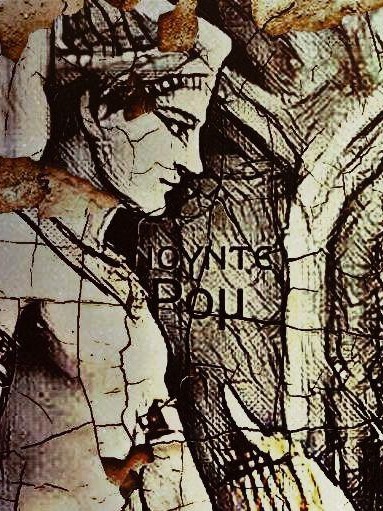
King Noynti Romi (aka Nounte/Nouti/Noute Rom). The character in his name looking like a "Y" is actually pronounced as a "U", according to Prof. Navarra, which would make his name "Nounte", as inscribed on the ancient mural found in the ruins of Erum. His second name also appears as "Rom" and not "Romi", which indicates a link, Prof. Navarra thinks, to the Romani and not Rome, the latter an inconceivable conception by an ignorant few. [I. B. D. M. Foote ( 1968)]
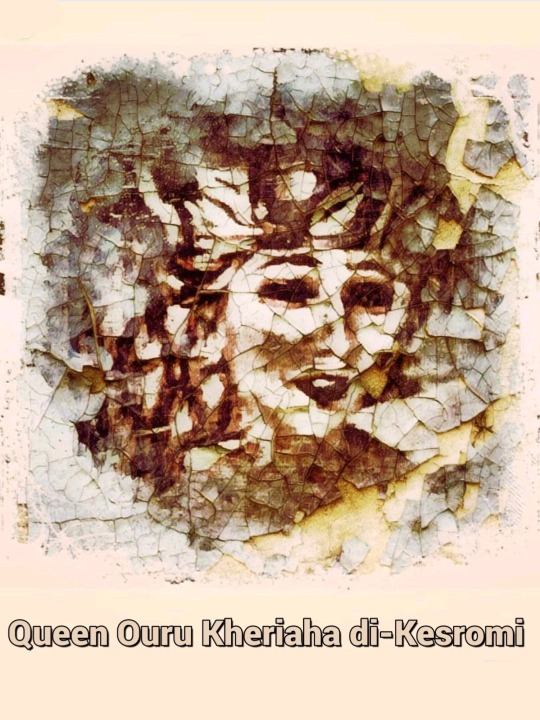
Queen Ouru Kheriaha di-Kesromi, wife of King Nounte Rom. Like most of the queens in the history of Ranisthan and Raz Tapu, she dominated her husband and was the real ruler of Raz Tapu Samal. Prof. Navarra eventually changed his opinion and believed the 'Adites were in Raz Tapu before King Nounte's conquest and that Queen Ouru was an 'Adite, who King Nounte eventually married. Based on this, he thinks that the so-called Rape of the Ar-Razi Women (by King Nounte and his army), depicted so many times in the ruins of Erum, is really the Rape of the 'Adite Royal Women and was only perpetuated by King Nounte and members of his court and not by the army and not on the mass population. However, based on oral history provided to me [Prof. Foote] by minor, non-ruling Queen Bilqis* and to both myself and Prof. Navarra, among others, by Ranisthani Oral Historian "Mukha", Prof. Navarra is not discounting that it is Ethiopian Sabaeans, who may have been the victims of the rape, and also, that Queen Ouru may have actually been an Ethiopian Sabaean. Regardless of that, Prof. Navarra believes the entire population of Raz Tapu was connected to each other or related in some way due to an intermingling of tribes over approximately 1000 years beginning some where about 500BCE and concluding between 400 to 500CE. [I. B. D. M. Foote ( 1968)]


*NB. It should be noted that my paternal grandfather, the above-mentioned Prof. Foote was the husband of Queen Bilqis even though he was already legally married and continued to be married to my grandmother, abandoning her in Bousy Island from the late 1960's to early 1970's. He returned to her and to Bousy Island in 1972 at the beginning of the Great Evacuation in Ranisthan. Queen Bilqis was granted "tenancy" of Bousy Island in 1974 by the elderly Graend Dame Cerisse of Bat Island, who owned the island, after the death of the former tenant the so-called Queen Solms. In the next year, Queen Bilqis, after long negotiations, was allowed to buy the island for an undisclosed sum. She changed nothing about the so-called "Island of Pubs", except to stop collecting taxes from the residents and also allowing them to own instead of leasing their properties. Other than its pubs, Bousy Island is famous for its former use as a departure point for one of the ex-Nazis ratlines to Argentina, and the assasination of former Nazi GenMaj. Otmar Zar, which ended the ratlines originating there. It is also the home of former Nazi Admiral (turned British spy) Euric Erbgraf von Schauenburg-Schloss and the home of filmmaker and journalist Circe-Lutece Nepteune (second home after her marriage to Bishop Mathurin of Baileywich Island and it is also the birthplace of her former lover, author Jenny Solmos). It also supposedly my birthplace, according to my parents (though all records indicate I was born in Andulasia, Spain). My grandparents continued to lived there and my grandfather continued illegally to be the husband of my grandmother as well as Queen Bilqis (who seemed to genuinely love him and also seem to have eome sort of spell over him). By the way, she never used the title 'Queen' after her arrival in Bousy Island, though the residents continued to address her as such. In fact, none of the thirty-odd Ranisthani queens should have been using that title from before 1950 but they continued to do so for the next 25 years. [Ibi Foote (2023)]
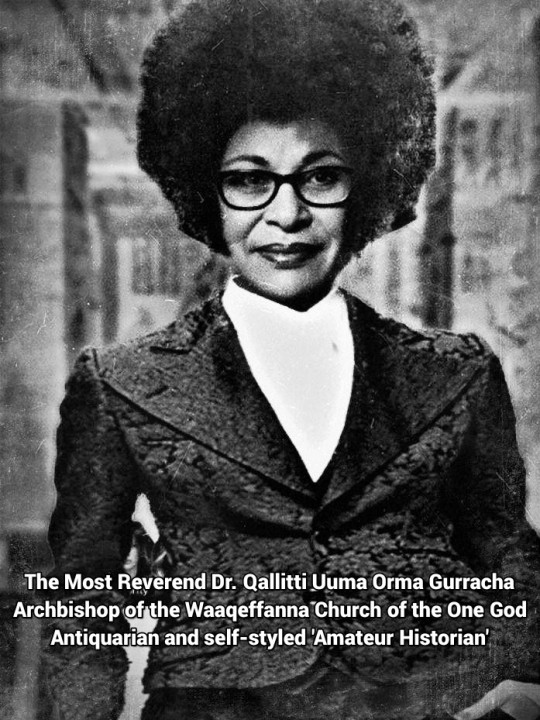
The Most Rev. Dr. Qallitti Uuma Orma Gurracha, Archbishop of the Waaqeffanna Church of the One God, headquartered in Gallaland, Atarasar, Union of Qara, Ranisthan. She is also a certified antiquarian and self-styled 'amateur historian'.

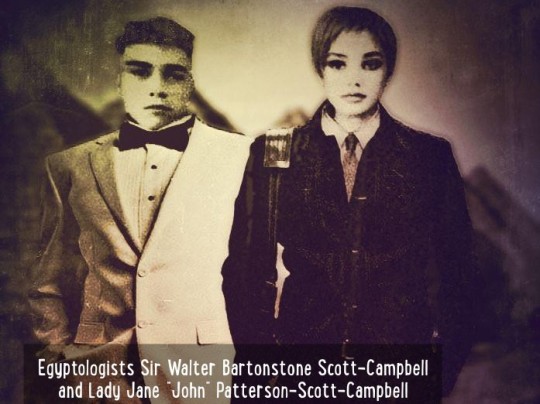
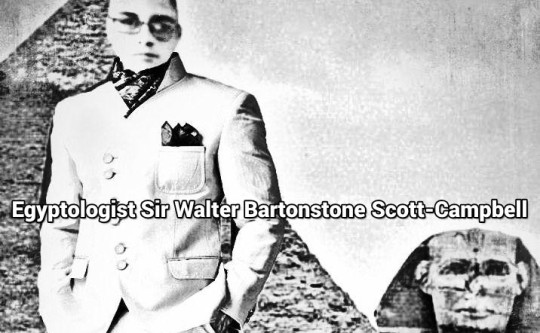
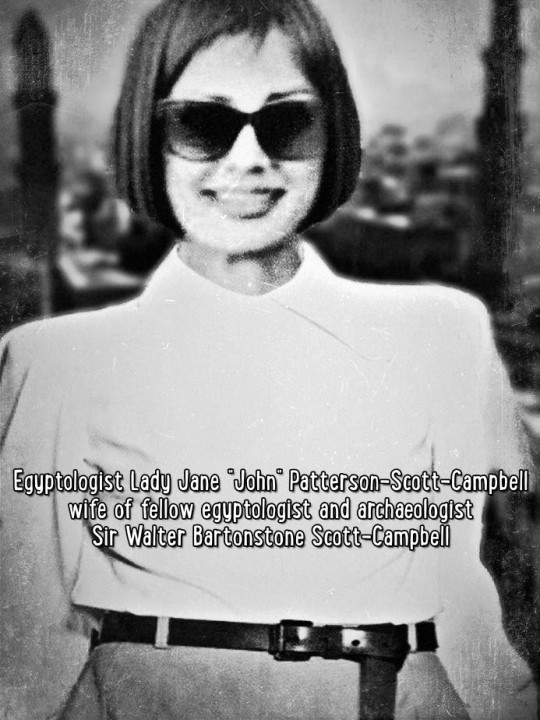
Egyptologists Sir Walter Bartonstone Scott-Campbell and Lady Jane "John" Patterson-Scott-Campbell.
#Ranisthan#History#Ranisthan-history#Navarra#Foote#Scott-Campbell#Archaeology#Archaeologist#Research#Egyptologist#Waaqeffafanna#Oromo#Afar#Nounte#Noynti#Punt#Ouru
0 notes
Photo


‘’ Ancient Pyramidion Relic ‘’ New Kingdom 18th Dynasty 1350 BC, Limestone
#pyramid#benben#ancient egyptian#relic#sacred#ancient egyptian artifact#kemet#khemet#ta meri#ta seti#khufu#amenenhap#ankh#life#djed#stability#mdw nTr#Medu Netjer#Ancient#Ancient Cultures#Ancient Art#Ancient Relic
33 notes
·
View notes
Text
Honestly… I fully expect Ramses to have had a punt gun.
Eternally torn between the dual desires to make properly sourced historical posts and convincing fake posts about how Tutankhamun had a gun.
5K notes
·
View notes
Text

Princess Tenagnework Haile Selassie, GBE (baptismal name: Fikirte Mariam; 12 January 1912 – 6 April 2003) was the eldest child of Emperor Haile Selassie and Empress Menen Asfaw.

Born in the city of Harar, Princess Tenagnework received her title upon her father's succession to the imperial throne in November 1930. Princess Tenagnework was first married to Ras Desta Damtew, a member of the prominent aristocratic Addisge clan. Ras Desta and Princess Tenagnework were the parents of two sons, Amha and Iskinder Desta (later Rear Admiral), and four daughters, Princesses Aida Desta, Seble Desta, Sophia Desta and Hirut Desta. Ras Desta Damtew was appointed Governor-General, first of Kaffa and Limu, and then of Sidamo.
In 1935, following the invasion of Ethiopia by Italy, the imperial family was forced to flee into exile at Fairfield House, Bath in England. However, Ras Desta remained behind to command the imperial forces fighting in the south of the country. Ras Desta was captured and summarily executed by the fascist forces. While in exile, Princess Tenagnework gave birth to Emebet Tsige Mariam (Mary) during a brief union with Ato Abebe Retta, who later served in ambassadorial and other roles in the post-war imperial government, and would eventually become president of the Imperial Senate after their separation.
#african#afrakan#kemetic dreams#africans#brownskin#afrakans#brown skin#african culture#Emebet Tsige Mariam#Abebe Retta#ethiopia#ta netjer#limu#sidamo#kaffa#tenagnework#Tenagnework Haile Selassie#italy#Fikirte Mariam#Menen Asfaw
16 notes
·
View notes
Text
Since Yugi and Atem share memories and such and Atem got his memories back in MW but didn’t die for another month, does this mean there was an entire month where it went both ways. Was poor Yugi walking around Domino and sitting in class like “Oh hey figs I used to love those, I remember one time they sent a bunch of ambassadors from Ta Netjer and they brought like eight barrels full but it turned into a huge mess and Set went livid because Mana was—Wait. Wait. Wait. Not mine.”
#i mean it could have happened just asking#mou hitori no boku this is really confusing did you really do this for three years
238 notes
·
View notes
Text

"Ma’at's purpose was to keep truth, balance, order, harmony, righteousness, morality, and justice."
Enjoy the #darkambient ride!
Original artwork: Own pic from Musée du Louvre shot in 2012
The Serpent - Chambers Of Osiris
Shibalba - Hymn to the Climbing Scarab
Nordvargr - Mantra For Khepr-ta
Worms of the Earth - The Hidden Pyramid, Where The Astral Is Given Form
Aeoga - Feast Of The Trance
The Serpent - Scale Of Anubis
Worms of the Earth - Neb Medu Netjer
Gnawed - The River Runs Dry
Alone In The Hollow Garden & Nam-khar - Khar - UR Herkau
https://www.thekultofo.com/maat/
#dark ambient#ambient#ritual#ritual ambient#experimental#ancient egypt#horus#ankh#gods of egypt#egyptian gods#pharaoh
4 notes
·
View notes
Text
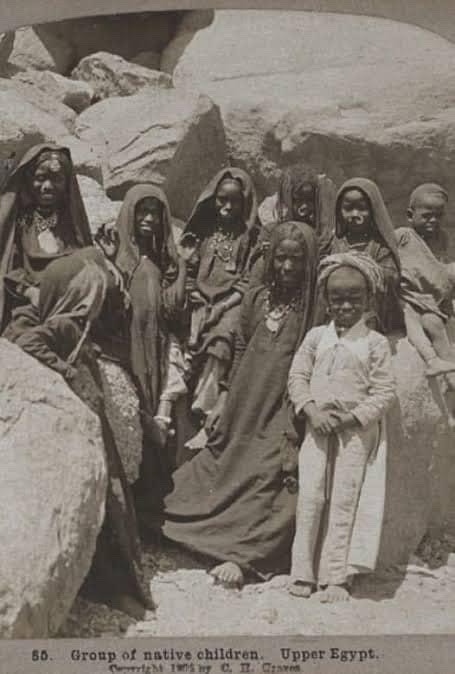


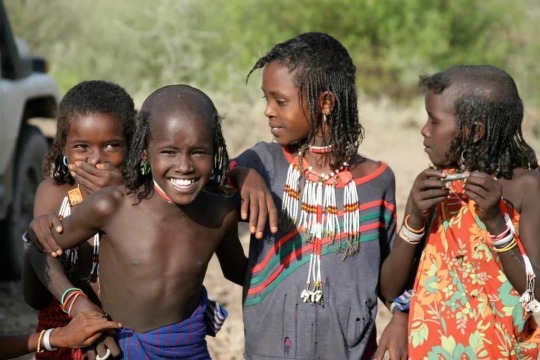


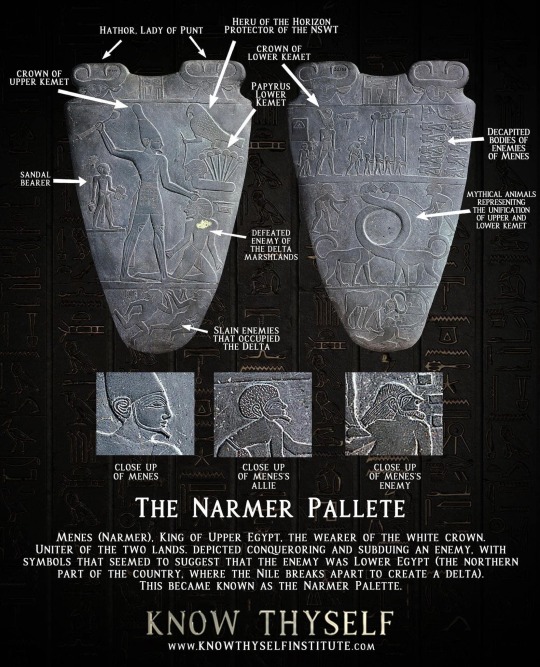



The indigenous peoples of the Hapi Valley were not Egytians or Nubians but rather Kemetyu and Nehesu, written in the Medu Neter as, 𓆎𓅓𓏏𓊖 and 𓅘𓎛𓋴 𓅫𓀎. They were sister civilizations with common culture and lineage in north east Africa. These ancient neolithic populations first migrated from the source of the Hapi which is in what European scholars love to call “Sub Sahran” Africa. It should be noted that this is a modern concept which these ancient populations did not adhere to.
The Source of the Blue Hapi being Lake Tana in Ethiopia and the White Hapi being Lake Victoria in Tanzania. Ta-Seti, Ta-Netjer and Ta-Meri evolved side by side, intermarried, traded, had alliances and conflicts. The Nation is Kemet, not Egypt and the region is Ta-Meri. In Medu Neter "Ta" means Land and Meri means Beloved (Beloved Land), and it was located in modern day Egypt and North Sudan. Ta-Netjer which is modern day Somalia and Northern Kenya translates to "Land of the Gods", Know as Punt of Puntland, indigenous known as Pwenet. Ta-Seti which is modern day Sudan translates to Land of the Bow, due to their world renowned Archers. They were masters of a style of archery known as "the double shot", which allowed them to fire two arrows almost simultaneously.
Narmer the first Pharaoh of Kemet was from Nehken which is modern day Aswan. He defeated the people of the Delta and Unified Upper and Lower Kemet. The people of Aswan today maintain their African identity as well as their dark Melanin.
Ta-Seti predates the unification of Ta-Meri known as Sema Tawy. Proof of this is the Qustul Burner which depicts Pharaonic iconography, a clear and concise artifact that proves Nwsts ruled in Ta-Seti in the Qustual and Naqada Regions around the same time if not before Menes came from the South and conquered the peoples who dwelled in the wet marshlands of the Delta. Menes came from the Nekhen, modern day Aswan, but his ancestors came from further south, down the Hapi river. He wore the white crown of Upper Kemet before the nation of Kemet was established, the same white crown depicted on the Qustul Incense Burner. These 3 civilizations, Ta-Meri, Ta-Seti, and Ta-Netjer comprised the Hapi Valley civilization.
The most clear-cut evidence of the origins of predynastic Kemetic culture is the 5,600 year old Black Mummy of the Green Sahara and the 9,000 year old Nabta Playa Stone Circle. This Black mummies remains was identified to belong to the A-Group, same as the cemeteries found in Qustual and Naqada. Also found was the earliest signs of cattle iconography and the worship or Het-Heru known later as Hathor, the Lady of Punt, or Pwenet. The Nabta Playa Stone Circle is one of the oldest astrological sites in the world. Adams Calendar which is located in South Africa being the oldest. At these sites they studied the procession of the equinox for thousands of years which allowed them to predict the monsoon seasons to grow their crops. Nabta Playa is also the site where humans first developed geometry and the concept of Pi. Around 3,400 BC drastic weather changes turned these luch tropical regions to desert and this is when these ancient Africans packed up and migrated northward following the flow of the Hapi river all the way to the Delta. These are the origins of Kemetic culture and science and the rest is history.
11 notes
·
View notes
Note
“Get used to disappointment.” - from Anubis (though he’s currently disguised in human form -wink-)
Evy could hardly believe it. There really was a secret library beneath the Great Sphinx of Giza. She hadn’t thought any feeling could match the wonder she’d felt on discovering Hamunaptra, but she’d been mistaken. The walls were lined with shelves that housed the largest collection of scrolls she’d ever seen.
After allowing herself a moment to look around in awe and take in her surroundings, she selected a scroll from one of the shelves and carefully unwrapped it. Holding it up to the light of her torch, she read aloud the first symbol she identified: “Ta netjer.” Evy’s heartbeat quickened with excitement. “Ta netjer,” or “God’s Land,” was a term the Ancient Egyptians had used to refer to the mysterious kingdom of Punt.
She also identified the cartouche of Pharaoh Sahure of the Fifth Dynasty, and it soon became evident that the scroll was a map of the route Sahure had taken on his expedition to Punt. Evy couldn’t wait to tell Rick and Jonathan what she’d found. She was already planning their next adventure in her mind when a man’s voice interrupted her thoughts, making her jump a little.
“Oh! Hello. I didn’t think anyone else was down here.” The light in the chamber was dim, but she could see the stranger’s face well enough to tell it was a handsome young Egyptian male. When she recovered from her shock, she asked, “Pardon?” Disappointment? Why would she be disappointed? Evy had had many disappointing experiences in her life, and she didn’t intend this to be one of them.
1 note
·
View note
Text
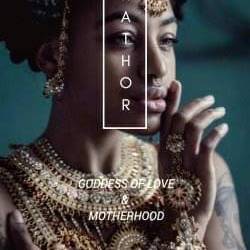
The israelites constructed and began worshiping a golden calf which was a personified deity of a Black Woman upon further inspection it is obvious that this golden-calf is in fact the Kemetic cow Goddess Hetheru. After spending so many years in kemet and observing the complex practices, culture and spiritual system of the egyptians (a system thousands of years in the making, with roots from the nubian people of kush — the egyptians were children and a colony of the kushites. It would be thought that moses would understand that the kemetans were not idol worshipers and that the image of the cow Goddess only symbolically represents the nourishing and life giving energy of a Black Woman the same energy which is an aspect of the all-encompassing transcendental God neberdjer. So the israelites were in fact emulating a kemetian practice, the practice of devotional veneration to both the Black woman, and to God! Het-Heru, Het-heret (Het-heret, Het-Heru; G/R Hathor) - "House of Heru" Another Name known from predynastic times, Hethert represents the feminine principle, as reflected in several of Her symbols. The cow, the mirror, and the ritual rattle or sistrum. Hethert is patroness of Black Women, and professions given to Her priesthood include dancers, singers, actors and acrobats even up to Greek times the arts were under Hethert's dominion. Hethert's temples, especially that at Ta-Netjer (Arabic Dendera) were centers for both healing with a hospital/sanatorium on-site and midwifery. Priests in the temple of Ta-Netjer conducted oracles with Hethert in trance rituals held in crypts underneath the sanctuary, and any person could sleep on the temple roof and hope for a dream, which could be interpreted the next morning by the priests. Even today, one can see graffiti and game boards left behind by those pilgrims, carved into the stones of Ta-Netjer's roof. Hethert's association with both cows and the sistrum probably results from Her assimilation of the Predynastic Netjer Bat; sistrum capitals atop the pillars throughout Kemetic temples show Hethert's full face with cow's ears atop a naos style sistrum. Hethert was closely associated with Heru-Behdety at Edfu, perhaps influencing the fact that She was a patroness of Kemet's queens as Heru is to the king, so Hethert is to the queen. Some queens are referred to by Hethert's titles of "Mistress of Heaven" and "Lady of Gold." Nefertary's spectacular temple at Abu Simbel in Nubia depicts the Great Royal Wife as Hethert in many places; and her husband Ramses II is depicted in its sanctuary, suckling from the udder of Hethert as a divine cow.
14 notes
·
View notes